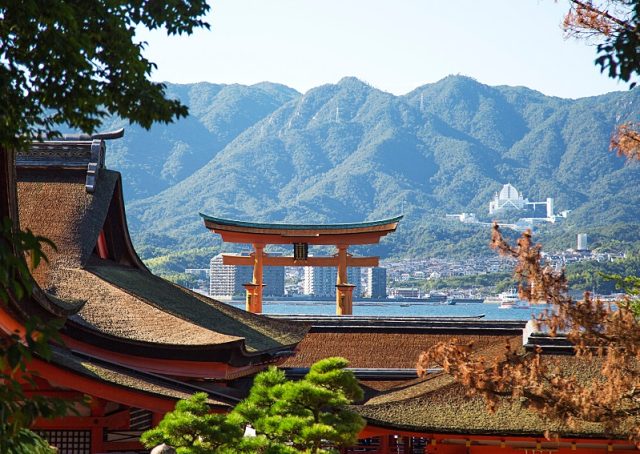A growing number of Japanese islands are introducing an “entrance tax” on visitors as they try to curb overcrowding.
The Hiroshima prefecture city of Hatsukaichi will impose a tax on visitors to the island of Miyajima, home to the Itsukushima Shrine, a World Heritage site.
Other islands attracting droves of tourists, such as Taketomi in Okinawa prefecture and Sado in Niigata prefecture, are also contemplating implementing such a tax. These levies are aimed at securing funds for managing massive streams of tourists while also protecting the precious culture and nature of the islands.
Hatsukaichi commenced collecting the Miyajima Visit Tax from October 01, 2023 onwards. Residents of the island will be exempt, as will commuters, students and preschool children. Other visitors will be required to pay the tax as an addition to their fare on ferries. The tax is 100 yen (67 cents) per person per visit, but an annual payment plan of 500 yen is also available. Tax-exempt certificates will be issued to residents, commuters and students.
In 2019, Miyajima, with a population of 1,400, saw a record 4.65 million visitors. The regular local allocation tax grant from the national government is not linked to the number of visitors, leading to a pressing need for securing an additional revenue source to cover swelling expenditures for tourism management measures.
In a survey of tourists conducted by the city in September 2020, 93 per cent of the respondents supported the introduction of a tax on visitors.
The city anticipates the new tax will bring in 140 million yen in fiscal 2023, running through next April. The revenue will be used for the maintenance of parks and toilets and the provision of free Wi-Fi. Shunji Mukai of the municipal government’s Miyajima planning division says the money is expected to help “pass on the nature and culture of Miyajima to future generations.”
The Miyajima Visit Tax is a type of nonstatutory tax imposed independently by local governments through ordinances, and as such requires the consent of the Ministry of Internal Affairs and Communications.
Four villages in Okinawa have been collecting similar local taxes. One of them, Izena, on Izena Island off the main Okinawa Island, in 2005 became the first to introduce such a tax, the Environmental Cooperation Tax. The villages’ nonstatutory taxes are, unlike the Miyajima tax, also charged to village residents.
On Taketomi Island in Okinawa, the town of Taketomi, which administers the World Natural Heritage site of Iriomote Island, is considering the introduction of a nonstatutory tax modeled on the Miyajima tax.
A panel of expert advisers, including academic researchers, started discussing the idea in September, with the municipal government planning to submit a draft ordinance to introduce a provisionally named “Taketomi Town Visit Tax” to the town assembly in March 2024.
Taketomi’s move has been prompted by the increasingly serious problem of overtourism, which is beginning to strain local infrastructure resources and contribute to erosion and other environmental damage, negatively affecting the lives of residents. The town, encompassing nine inhabited islands, has a population of around 4,300 and was thronged by over 1 million tourists annually prior to the COVID-19 pandemic. Even in 2022, when the tourism industry was still in the process of recovering from the pandemic, the number reached approximately 730,000.
To provide administrative services to accommodate a large number of visitors, “several hundred million to over a billion yen of independent revenue is needed annually,” said an official at the town’s tax division. In fiscal 2019, the town began to ask visitors to Taketomi Island to voluntarily pay a 300 yen “entrance fee,” but in fiscal 2021 the collection rate was around 14 per cent, bringing in revenue of just 7.3 million yen.
The amount for the proposed visit tax remains a subject of ongoing deliberation. However, a 2019 survey of visitors to Iriomote Island conducted by the Ministry of the Environment found that 500 yen was the amount cited as appropriate by the largest number of respondents. Consequently, discussions on the amount of the tax are likely to center around this figure.
As the pall of the pandemic has lifted, tourism demand is rebounding. In sync with the growing tourist influx, an increasing number of municipalities with remote islands are moving to launch new nonstatutory taxes, including entrance taxes.
In August, the city of Amami in Kagoshima prefecture set up a committee tasked with considering ways to create new financial sources to protect the value of the island of Amami Oshima as a World Natural Heritage site. The committee will debate whether to impose taxes or ask for voluntary contributions, drawing on the experiences of other municipalities that have introduced nonstatutory taxes. The panel is expected to compile a report in fiscal 2023.
The Niigata city of Sado, covering Sado Island, which aims for World Heritage registration, is also considering the implementation of similar nonstatutory taxes. A draft strategy for promoting tourism exchange that the municipal government compiled in July called for considering the introduction of an accommodation tax and an entrance tax.
Tourism is an essential source of revenue for remote islands, and increasing it in a sustainable way contributes to island development.
Akiko Kohsaka, chief researcher at the Japan Research Institute, stresses the importance of winning broad support for such measures among the people and organizations involved. Local governments should “convince parties concerned of the need and wisdom of the measures by verifying their cost effectiveness while clarifying the uses of the nonstatutory taxes,” she said.
Source: Nikkei Asia
















































